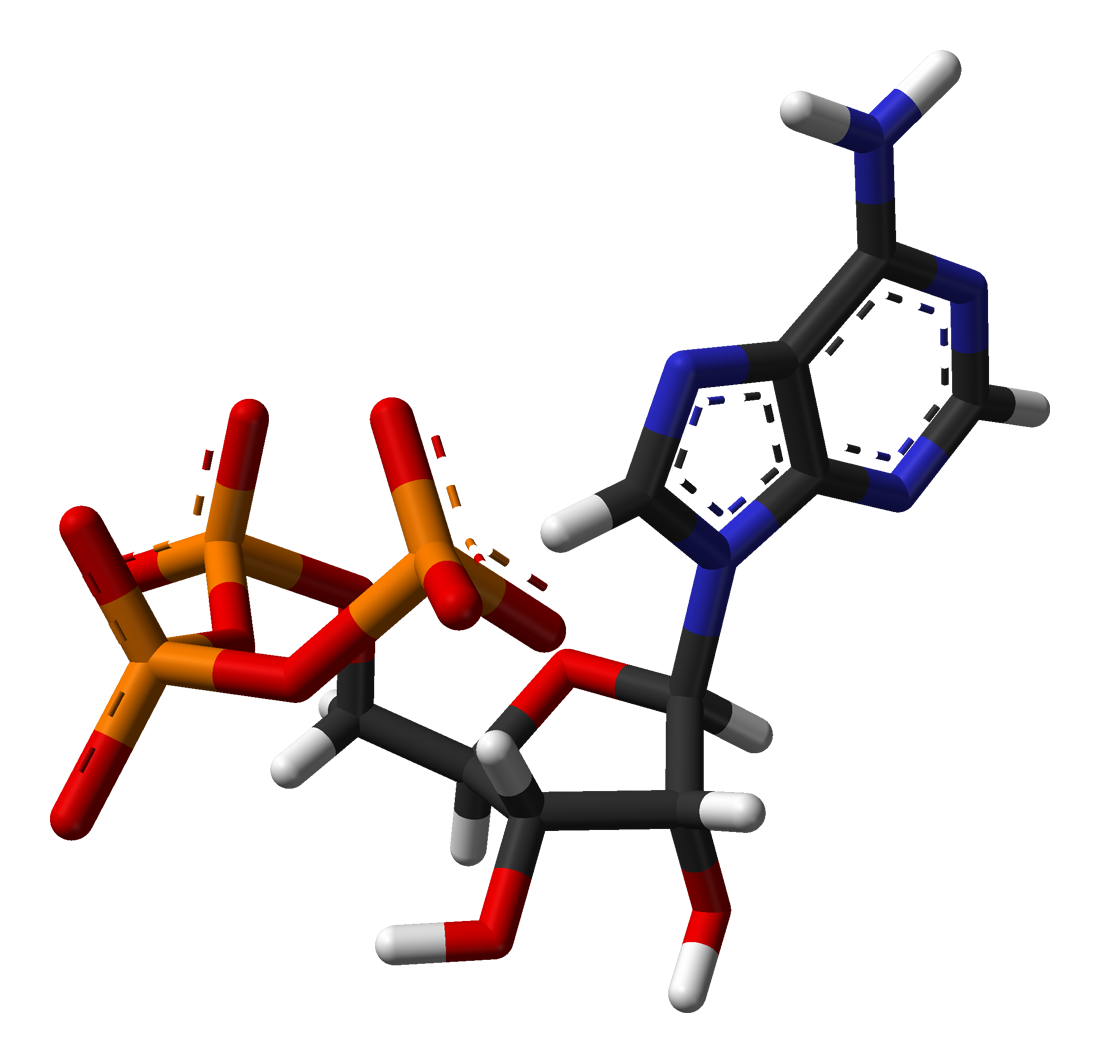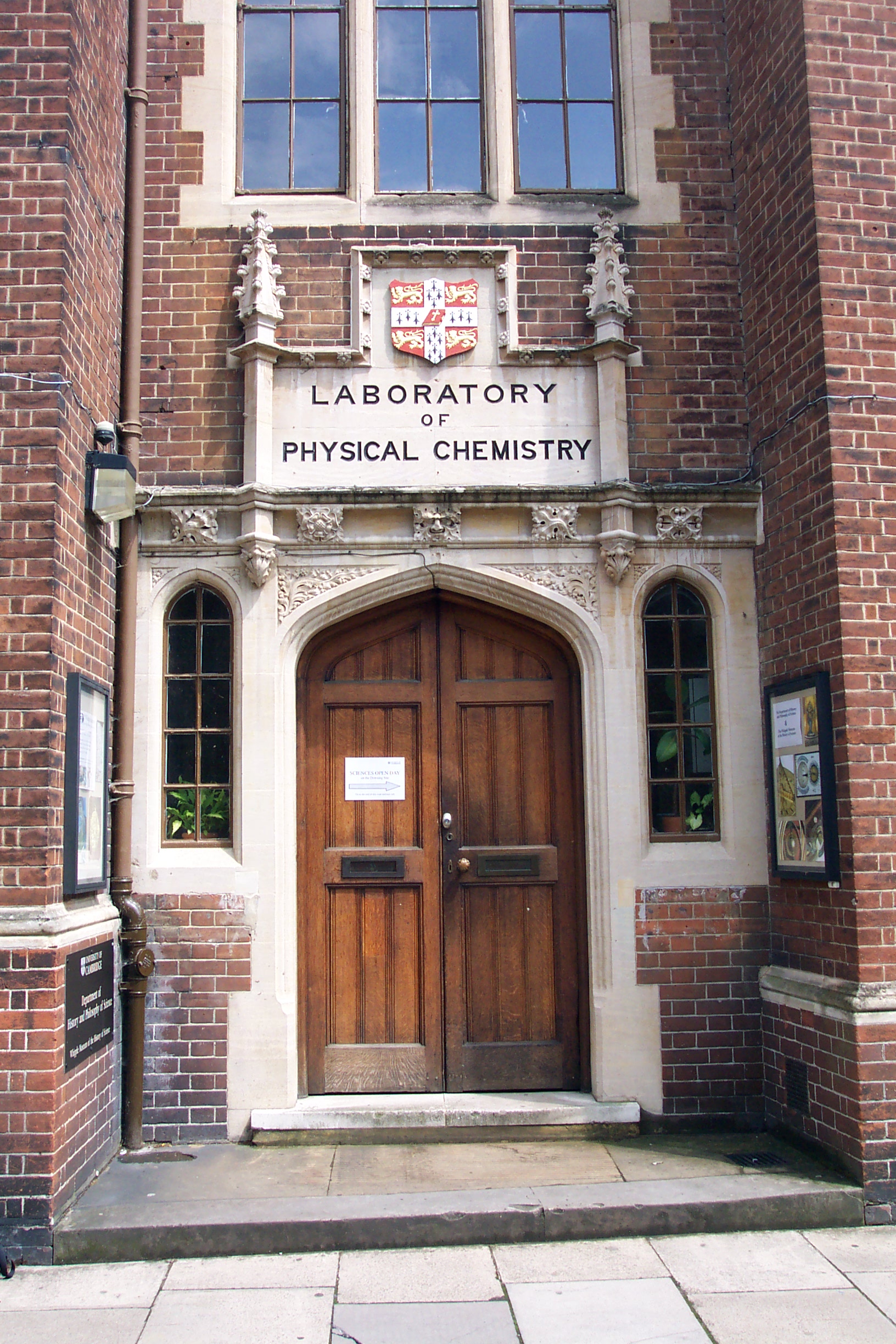|
Olga Kennard
Olga Kennard, Lady Burgen ( Weisz; 23 March 1924 – 1 March 2023) was a Hungarian-born British scientist who specialised in crystallography. She was the founder of the Cambridge Crystallographic Data Centre. Kennard's research focused on determining the structures of organic molecules, including the first three-dimensional structure of adenosine triphosphate and particularly the different forms of DNA. Together with JD Bernal she believed in the value of collating scientific data in a central archive, this began the Cambridge Structural Database (CSD), collating crystal structures of mainly organic molecules. Kennard was also involved, at CSD, in the founding of the Protein Data Bank, and of the EMBL nucleotide sequence data library (later, European Nucleotide Archive). Early life and education Kennard was born in Budapest, Hungary on 23 March 1924, to Joir and Catherina Weisz. She moved to the United Kingdom at the age of 15 with her family in the face of growing antisemit ... [...More Info...] [...Related Items...] OR: [Wikipedia] [Google] [Baidu] |
Budapest
Budapest is the Capital city, capital and List of cities and towns of Hungary, most populous city of Hungary. It is the List of cities in the European Union by population within city limits, tenth-largest city in the European Union by population within city limits and the List of cities and towns on the river Danube, second-largest city on the river Danube. The estimated population of the city in 2025 is 1,782,240. This includes the city's population and surrounding suburban areas, over a land area of about . Budapest, which is both a List of cities and towns of Hungary, city and Counties of Hungary, municipality, forms the centre of the Budapest metropolitan area, which has an area of and a population of 3,019,479. It is a primate city, constituting 33% of the population of Hungary. The history of Budapest began when an early Celts, Celtic settlement transformed into the Ancient Rome, Roman town of Aquincum, the capital of Pannonia Inferior, Lower Pannonia. The Hungarian p ... [...More Info...] [...Related Items...] OR: [Wikipedia] [Google] [Baidu] |
Officer Of The Order Of The British Empire
The Most Excellent Order of the British Empire is a British order of chivalry, rewarding valuable service in a wide range of useful activities. It comprises five classes of awards across both civil and military divisions, the most senior two of which make the recipient either a Orders, decorations, and medals of the United Kingdom#Modern honours, knight if male or a dame (title), dame if female. There is also the related British Empire Medal, whose recipients are affiliated with the order, but are not members of it. The order was established on 4 June 1917 by King George V, who created the order to recognise 'such persons, male or female, as may have rendered or shall hereafter render important services to Our Empire'. Equal recognition was to be given for services rendered in the UK and overseas. Today, the majority of recipients are UK citizens, though a number of Commonwealth realms outside the UK continue to make appointments to the order. Honorary awards may be made to cit ... [...More Info...] [...Related Items...] OR: [Wikipedia] [Google] [Baidu] |
Fellow Of The Royal Society
Fellowship of the Royal Society (FRS, ForMemRS and HonFRS) is an award granted by the Fellows of the Royal Society of London to individuals who have made a "substantial contribution to the improvement of natural science, natural knowledge, including mathematics, engineering science, and medical science". Overview Fellowship of the Society, the oldest known scientific academy in continuous existence, is a significant honour. It has been awarded to :Fellows of the Royal Society, around 8,000 fellows, including eminent scientists Isaac Newton (1672), Benjamin Franklin (1756), Charles Babbage (1816), Michael Faraday (1824), Charles Darwin (1839), Ernest Rutherford (1903), Srinivasa Ramanujan (1918), Jagadish Chandra Bose (1920), Albert Einstein (1921), Paul Dirac (1930), Subrahmanyan Chandrasekhar (1944), Prasanta Chandra Mahalanobis (1945), Dorothy Hodgkin (1947), Alan Turing (1951), Lise Meitner (1955), Satyendra Nath Bose (1958), and Francis Crick (1959). More recently, fellow ... [...More Info...] [...Related Items...] OR: [Wikipedia] [Google] [Baidu] |
University Of London
The University of London (UoL; abbreviated as Lond or more rarely Londin in Post-nominal letters, post-nominals) is a collegiate university, federal Public university, public research university located in London, England, United Kingdom. The university was established by royal charter in 1836 as a degree-awarding examination board for students holding certificates from University College London, King's College London and "other such institutions, corporate or unincorporated, as shall be established for the purpose of Education, whether within the Metropolis or elsewhere within our United Kingdom". It is one of three institutions to have claimed the title of the Third-oldest university in England debate, third-oldest university in England. It moved to a federal structure with constituent colleges in 1900. It is now incorporated by its fourth (1863) royal charter and governed by the University of London Act 2018 (c. iii). The university consists of Member institutions of the Un ... [...More Info...] [...Related Items...] OR: [Wikipedia] [Google] [Baidu] |
European Crystallographic Association
The European Crystallographic Association (ECA) is an independent scientific organisation, representing both national crystallographic associations in Europe as well as individual members. ECA was founded in 1997. In May 2021 the association had 35 national and several hundred individual members. ECA is one of the regional affiliates of the International Union of Crystallography. The other independent regional affiliates are the American Crystallographic Association, the Asian Crystallographic Association and the Latin American Crystallographic Association. The association is registered under Dutch law in Zeist. The mission of ECA is the promotion of crystallography in all of its aspects, including the related field of non-crystalline solid state, as well as extending European cooperation in the field of crystallography. These aims are realised through the support of crystallographic conferences, workshops and schools both in Europe and Africa. History ECA was founded during t ... [...More Info...] [...Related Items...] OR: [Wikipedia] [Google] [Baidu] |
The Guardian
''The Guardian'' is a British daily newspaper. It was founded in Manchester in 1821 as ''The Manchester Guardian'' and changed its name in 1959, followed by a move to London. Along with its sister paper, ''The Guardian Weekly'', ''The Guardian'' is part of the Guardian Media Group, owned by the Scott Trust Limited. The trust was created in 1936 to "secure the financial and editorial independence of ''The Guardian'' in perpetuity and to safeguard the journalistic freedom and liberal values of ''The Guardian'' free from commercial or political interference". The trust was converted into a limited company in 2008, with a constitution written so as to maintain for ''The Guardian'' the same protections as were built into the structure of the Scott Trust by its creators. Profits are reinvested in its journalism rather than distributed to owners or shareholders. It is considered a newspaper of record in the UK. The editor-in-chief Katharine Viner succeeded Alan Rusbridger in 2015. S ... [...More Info...] [...Related Items...] OR: [Wikipedia] [Google] [Baidu] |
Department Of Chemistry, University Of Cambridge
The Yusuf Hamied Department of Chemistry is the University of Cambridge's chemistry department. It was formed from a merger in the early 1980s of two separate departments that had moved into the Lensfield Road building decades earlier: the Department of Physical Chemistry (originally led by Professor Ronald Norrish FRS, Nobel Laureate; the department was previously located near the Old Cavendish in Free School Lane - see photo) and the Department of Chemistry (that included theoretical chemistry and which was led by Lord (Alexander) Todd FRS, Nobel Laureate) respectively. Research interests in the department cover a broad of chemistry ranging from molecular biology to geophysics. The department is located on the Lensfield Road, next to the Panton Arms on the South side of Cambridge. In December 2020, it was renamed for 30 years in recognition of a donation from Dr Yusuf Hamied, an alumnus of the department. Research The Department's research is organised around five Research ... [...More Info...] [...Related Items...] OR: [Wikipedia] [Google] [Baidu] |
National Institute For Medical Research
The National Institute for Medical Research (NIMR), was a medical research institute based in Mill Hill, on the outskirts of north London, England. It was funded by the Medical Research Council (MRC); In 2016, the NIMR became part of the new Francis Crick Institute, which was constructed next to St Pancras railway station in the Camden area of central London. History Foundation The Medical Research Council, founded in 1913, was immediately charged with establishing a central research institute in London. Later that year, premises at Hampstead were acquired and the National Institute for Medical Research was founded. However, the outbreak of World War I soon afterwards delayed occupation of the building, although senior staff were appointed and began work. By 1920 the institute at Mount Vernon Hospital was fully operational and remained so for 30 years until the move to Mill Hill. The original institute, under the directorship of Sir Henry Dale, had three divisions: * Bact ... [...More Info...] [...Related Items...] OR: [Wikipedia] [Google] [Baidu] |
Hamilton Hartridge
Hamilton Hartridge (7 May 1886 – 13 January 1976) was a British eye physiologist and medical writer.'Obituary: H. Hartridge', ''British Medical Journal'', 20 March 1976, p.716 Known for his ingenious experimentation and instrument construction abilities, he designed what is called the Hartridge Reversion Spectrometer. This was used for pioneering studies on haemoglobin oxygen-binding studies. Education and early career Hartridge was educated at Harrow and King's College, Cambridge, where he became a fellow from 1912 to 1926. He graduated in medicine from St George's Hospital in 1914, serving during the war as an experimental officer at RNAS Kingsnorth. In 1916 he married Kathleen Wilson, and they later had four children together. After the war he stayed in Cambridge University as lecturer in special senses and senior demonstrator in physiology. He gained a reputation as an ingenious experimenter, constructing, for example, the continuous-flow apparatus for measuring the rate ... [...More Info...] [...Related Items...] OR: [Wikipedia] [Google] [Baidu] |
Vitamin A
Vitamin A is a fat-soluble vitamin that is an essential nutrient. The term "vitamin A" encompasses a group of chemically related organic compounds that includes retinol, retinyl esters, and several provitamin (precursor) carotenoids, most notably Β-Carotene, β-carotene (''beta''-carotene). Vitamin A has multiple functions: growth during embryo development, maintaining the immune system, and healthy vision. For aiding vision specifically, it combines with the protein opsin to form rhodopsin, the light-absorbing molecule necessary for both low-light (scotopic vision) and color vision. Vitamin A occurs as two principal forms in foods: A) retinoids, found in Animal source foods, animal-sourced foods, either as retinol or bound to a fatty acid to become a retinyl ester, and B) the carotenoids Α-Carotene, α-carotene (''alpha''-carotene), β-carotene, Γ-Carotene, γ-carotene (''gamma''-carotene), and the xanthophyll beta-cryptoxanthin (all of which contain β-ionone rings) that ... [...More Info...] [...Related Items...] OR: [Wikipedia] [Google] [Baidu] |
Rhodopsin
Rhodopsin, also known as visual purple, is a protein encoded by the ''RHO'' gene and a G-protein-coupled receptor (GPCR). It is a light-sensitive receptor protein that triggers visual phototransduction in rod cells. Rhodopsin mediates dim light vision and thus is extremely sensitive to light. When rhodopsin is exposed to light, it immediately photobleaches. In humans, it is fully regenerated in about 30 minutes, after which the rods are more sensitive. Defects in the rhodopsin gene cause eye diseases such as retinitis pigmentosa and congenital stationary night blindness. History Rhodopsin was discovered by Franz Christian Boll in 1876. The name rhodopsin derives from Ancient Greek () for "rose", due to its pinkish color, and () for "sight". It was coined in 1878 by the German physiologist Wilhelm Friedrich Kühne (1837–1900). When George Wald discovered that rhodopsin is a holoprotein, consisting of retinal and an apoprotein, he called it opsin, which tod ... [...More Info...] [...Related Items...] OR: [Wikipedia] [Google] [Baidu] |




